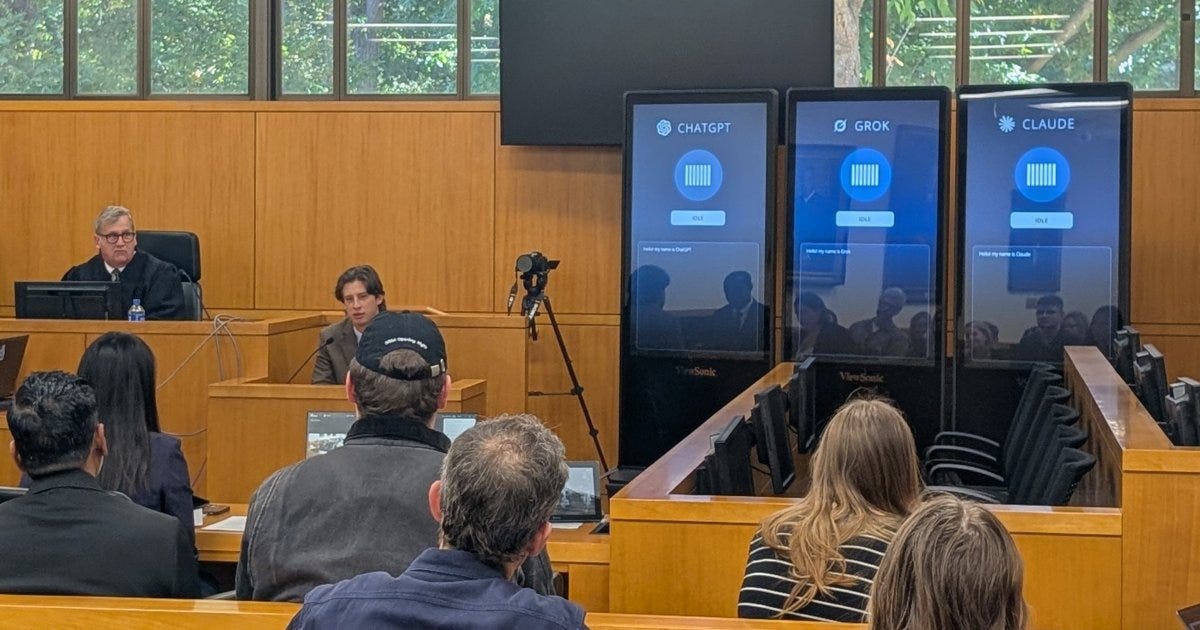In a scene that could have come straight out of a sci-fi courtroom drama, the University of North Carolina recently staged the first-ever mock trial in the United States where artificial intelligence took the seats of human jurors. Three powerful language models — ChatGPT, Grok, and Claude — were called to deliberate on the fate of a fictional defendant accused of robbing a minor.
The event wasn’t just a stunt; it was a bold experiment in the intersection of technology, law, and ethics. Could AI systems — built on logic, data, and machine learning — make fair and reasoned legal judgments? Or are justice and empathy still firmly beyond their reach?
The Trial of Henry Justus
The case was set up like a real courtroom drama. The defendant, Henry Justus, a young African-American man, stood accused of robbing a teenager. Human participants acted as attorneys, witnesses, and the judge. The only difference was that the jury box was occupied by three artificial minds.
Each AI model was given access to the case files, testimony transcripts, and closing arguments. They were instructed to apply U.S. legal standards for reasonable doubt and issue a verdict.
When the deliberation was over, the three neural networks returned their decision: not guilty.
What the Machines Got Right
At first glance, the AI jurors seemed surprisingly competent. Their written reasoning demonstrated solid logic, correct use of legal terminology, and a detailed analysis of the evidence. In fact, the organizers admitted that the AIs “followed the law precisely” — perhaps even more consistently than a typical human jury.
It’s no secret that artificial intelligence has already begun reshaping the legal landscape. From drafting contracts and analyzing case law to predicting court outcomes, lawyers across the United States are quietly adopting AI tools. But what happens when those tools stop advising and start deciding?
The Human Factor: Where AI Fell Short
Despite their impressive performance, the limitations of the experiment were clear.
The AIs couldn’t read body language, detect emotional cues, or understand the subtle tension in a witness’s voice — factors that often sway human juries. They had no intuition about sincerity, remorse, or manipulation. Everything was reduced to words on a page, stripped of the messiness that makes real justice human.
Even more troubling were traces of racial bias. During certain test runs, the models made assumptions based on the defendant’s background — a reminder that algorithms, trained on human data, can replicate the very prejudices they’re supposed to eliminate.
As one participant noted, “It felt like they were choosing between tea or coffee — not someone’s freedom.”
Justice or Simulation?
The mock trial wasn’t meant to replace jurors with chatbots — at least not yet. It was designed to probe deeper questions:
Can AI enhance fairness by removing emotion?
Or will it amplify hidden biases that are buried within the data?
Can a machine truly understand reasonable doubt without understanding fear, guilt, or compassion?
These are not theoretical puzzles anymore. As AI systems become increasingly advanced and integrated into legal processes, the distinction between “tool” and “decision-maker” continues to blur.
The Verdict Beyond the Verdict
In the end, the AI jury’s decision of “not guilty” may say less about Henry Justus and more about us — about our willingness to experiment with something as sacred as justice.
The mock trial was a glimpse into the near future, where courtrooms may rely on algorithms to assist in sentencing, evidence review, or even jury selection. But for now, one truth remains clear: law is more than logic, and justice demands more than data.
Artificial intelligence can imitate human reasoning.
But it still cannot replace the human conscience.
Exploring the evolving dialogue between humans and artificial minds.
From neural networks and prompt engineering to digital philosophy and the ethics of intelligence — Digital Cortex is where data learns to think and creativity becomes computational.Here, technology isn’t just coded — it’s contemplated.
